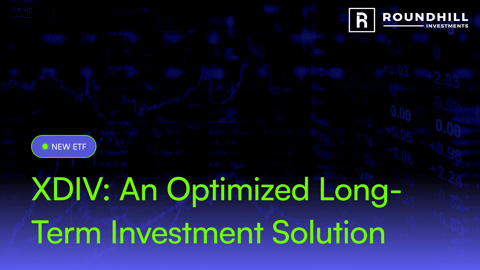Option Greeks Deep Dive - Gamma: The Rise of the Meme Stock
Introduction
Back in late 2020 and early 2021, the gamma and short squeezes created by various retail traders produced what we now know as the phenomenon of “meme stocks”. The infamous GameStop squeeze resulted in multiple notable hedge funds suffering substantial losses and one hedge fund shutting its doors completely. More notably, while gamma has always been front and center when discussing major market trends with traders and Wall Street, the inception of meme stocks brought gamma into the spotlight for retail investors.
Despite its complexities, retail investors have been keen to understand and discuss gamma as it is now one of the most popularly discussed Greeks. In this blog, we’ll delve into gamma, both on a micro and macro level, and how it plays a key role in the creation of a meme stock.
Understanding Gamma
Gamma measures the rate of change of delta in an option; whereas delta measures an option’s price sensitivity to its underlying asset’s price. Therefore, if we remove delta from the equation, gamma measures the acceleration or deceleration of how an option’s price moves with fluctuations in the underlying asset. Options traders are frequently talking about an option’s “convexity”, and gamma contributes to an option’s price convexity.
Simply put – the higher the gamma, the more volatile the price of the option, and vice versa. Where is gamma the highest? It will be the highest when an option is trading near-the-money. Let’s visualize it to explain.
The first graphic below is the delta curve:
- Deep out-the-money options have a 0% delta (or no sensitivity to the underlying stock’s price) and
- Deep in-the-money options have a 100% delta (or complete sensitivity to the underlying stock’s price).
- Gamma is measured as the slope of this curve.
Delta curve at one point in time

Source: Roundhill
To visualize how Gamma moves relative to the stock price, you can either take the derivative of delta’s function or, more simply, plot the slope of the delta curve at every stock price. That will yield the graphic below.
Gamma curve at one point in time

Source: Roundhill
Gamma is the highest at-the-money when delta itself is trading at 50%. This should logically make sense, as option prices are moving around the most when the likelihood that the option ends in- or out-of-the-money is trading at 50/50 odds.
The Directionality of Gamma
Much like many other Greeks, gamma risk is directional. Long options all have positive gamma, as the owner benefits from that option going in-the-money. Short options have negative gamma as sellers will suffer losses from a growing delta on their short position (this point will become key later).
Delta-Gamma Hedging
Let’s say a trader is long gamma. The delta of their position grows as the underlying stock price rises (or shrinks as the underlying stock price decreases). In order to maintain a delta-neutral position, that trader will then be selling shares into rallies and buying shares during dips. This is a pretty nice gig. Long gamma traders naturally profit from gamma volatility as they are consistently buying low and selling high.
Now, hedging a short gamma position is significantly trickier. If a trader is short gamma, they are exposed to delta moving against them as the underlying stock trades higher. Short gamma traders are constantly buying into rallies and selling into dips. This hedging action does not fade a market movement but instead amplifies it.
What are the spark notes?
- Long gamma traders are buying low and selling high; they profit from volatility. Their actions of selling on rallies, buying during falls, dampens volatility.
- Short gamma traders are doing the opposite by selling low and buying high, and they are hurt from volatility in the market. Their actions tend to extrapolate volatile swings by selling into dips and buying rallies.
Understanding Gamma Squeezes
You may be able to predict the mechanics of a gamma squeeze by now. In simple terms, a gamma squeeze occurs when option dealers have sold many options on one specific underlying asset, and have created a substantial short gamma position in the market.
If the stock rallies, hedgers are forced to buy that stock’s shares to hedge their risk. The convex nature of gamma causes a feedback loop of chasing the rally: higher prices result in more buying which results in even higher prices. The result is a massive rip or “squeeze” in the stock’s price.
GameStop’s Squeeze
Five years ago, markets witnessed one of the wildest gamma squeezes in history. The story will be remembered as a classic case of David vs Goliath.
GameStop had been a Wall Street favorite short play. Its short interest was greater than 100%, a rare occurrence in markets. Retail traders noticed and began buying both stock and call options in mass, specifically focusing on cheap, far out-of-the-money options.
To hedge their risk, dealers were forced to buy massive amounts of GameStop shares. This gamma squeeze, in turn, led to a short squeeze; the rally compounded further as short sellers were forced to cover their positions by buying. The result? A 2000%+ increase in stock price in less than a month.
The Inception of Meme Stocks
Retail traders with a solid understanding of gamma squeezes were able to expose vulnerabilities in markets and exert extreme influence on financial markets by leveraging that knowledge. They then took that model and replicated it across dozens of other stocks in the following months: AMC Entertainment, Blackberry, Nokia. All of these stocks not only had substantial short interest, but they also held a certain amount of nostalgia or intrigue within the retail trading community. This was the birth of “meme stocks”.
Today, the definition of a meme stock has evolved to generally encompass names which social media and reddit traders have latched onto. Retail traders do not need to leverage a high short exposure to move stocks; they now have enough capital to impact even a stable security (albeit the majority of meme stocks are still illiquid and highly shorted).
Nonetheless, the impact remains the same: meme stocks are those that retail traders target to express highly bullish views, which generally results in outsized volume and volatility with a significant increase in stock price. What started as community traders on messaging boards has turned into a new thematic within markets, whereby meme stocks can be used collectively as a way to measure retail sentiment and have become a popular trading tool across Wall Street.
Glossary
Call Option – A financial contract that gives the buyer the right, but not the obligation, to purchase an underlying asset at a predetermined strike price before or at expiration.
In-the-Money Option (ITM) – An option that has intrinsic value. For a call, this means the underlying price is above the strike price; for a put, it means the underlying price is below the strike.
Out-of-the-Money Option (OTM) – An option that has no intrinsic value. For a call, this means the underlying price is below the strike price; for a put, it means the underlying price is above the strike.
Convexity (in options) – The non-linear relationship between an option’s price and movements in the underlying asset. Convexity comes from gamma, meaning option values accelerate as the underlying moves further in-the-money, giving options payoff curves their curved (convex) shape.
Disclosures
Carefully consider the investment objectives, risks, charges and expenses of Roundhill ETFs before investing. This and other information about each fund is contained in the Prospectus and Summary Prospectus. Please read the prospectus and summary prospectus carefully before investing as it explains the risks associated with investing in the ETFs. Each Fund prospectus can be found on the individual Fund page under https://www.roundhillinvestments.com/etf/.
Options involve risk and are not suitable for all investors. Investing in options can result in the loss of the entire investment, especially for out-of-the-money contracts. Options are complex financial instruments that are affected by factors such as time decay, volatility, and market movements. While gamma strategies can help manage risk, strategies involving options may expose investors to significant losses, including the potential for unlimited loss in uncovered positions. They may not be appropriate for all investors.
Active Management: These strategies involve complex and dynamic risk exposures that require continuous monitoring and active management to maintain intended risk profiles. Higher Transaction Costs: Frequent adjustments, hedging, and rebalancing may result in significantly higher transaction costs compared to passive investment strategies, which can reduce overall returns. Market Volatility and Liquidity Risks: Gamma exposure can amplify sensitivity to price movements, especially during periods of high volatility or near option expiration, potentially requiring rapid trading under liquidity constraints. These strategies are generally suitable only for sophisticated investors with experience in derivatives and the ability to actively manage positions.
All investing involves risk, including the risk of loss of principal. There is no guarantee an investment strategy will be successful.
Roundhill’s funds are distributed by Foreside Fund Services, LLC.



